#aizanoi
Explore tagged Tumblr posts
Text
That is BRIGHT pink. Suddenly 'the ancient world in colour' has taken on a whole new meaning for me.
58 notes
·
View notes
Text
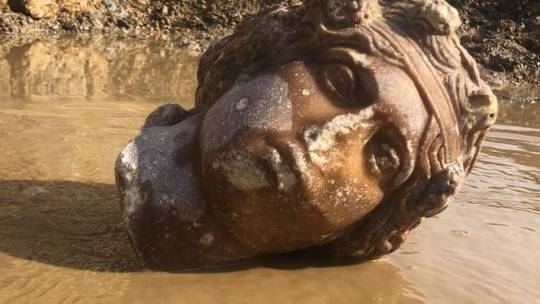
Turkish Archaeologists Unearth Sculpted Heads of Ancient Greek Deities
The excavations in Kutahya province’s ancient city of Aizanoi, which is the site of many ancient Greek and Roman-era settlements, discover the statue heads of Dionysus and Aphrodite.
Turkish archaeologists have discovered more sculpted heads of ancient Greek deities during excavations in Türkiye's western Kutahya province.
The statue head of Aphrodite, known as the goddess of love and beauty in Greek mythology, and the statue head of Dionysus, the deity of wine, were discovered during excavation work in an ancient city in central Türkiye.
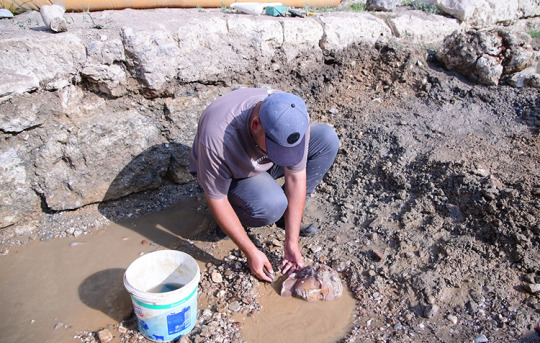
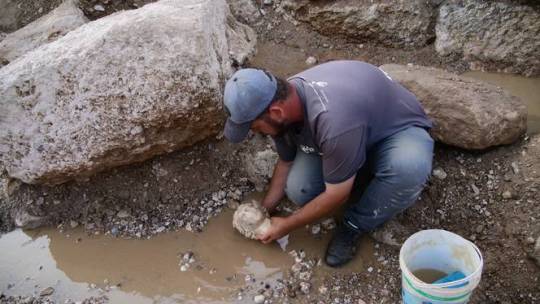
Modern Türkiye is the site of many ancient Greek and Roman-era settlements.
With a history dating back 5,000 years, Aizanoi, situated 50 kilometres (31 miles) from the Kutahya city centre, was included in the UNESCO World Heritage Tentative List in 2012.
Archaeological excavations are currently underway in Aizanoi, which is located in the Cavdarhisar district of Kutahya province and is home to Anatolia's best-preserved Temple of Zeus.
Archaeology professor and excavation team leader Gokhan Coskun told Anadolu Agency that numerous statue pieces were discovered during the excavation.
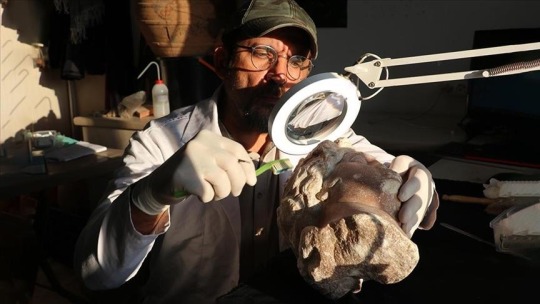
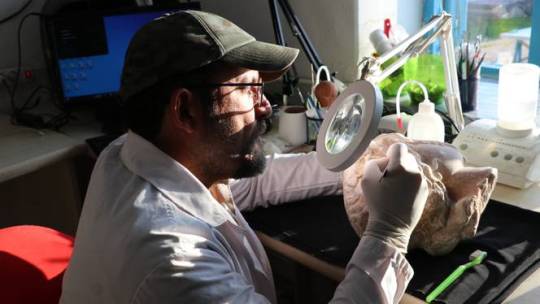
"The most exciting development for us this season is uncovering new heads of the goddess of love and beauty, Aphrodite, and the deity of wine Dionysus," Coskun said.
"In the excavation works we have conducted in the region so far, we have unearthed more than 100 statue pieces. Some of the heads found are from statues that are 2-3 meters long," he noted.
"These statue heads, which we first discovered three years ago, are in very well-preserved condition. During our excavations, so far we have discovered two Aphrodite and three Dionysus statue heads," Coskun said.
The excavation season, which began in the ancient city last April, will be completed by the end of this month, Coskun added.
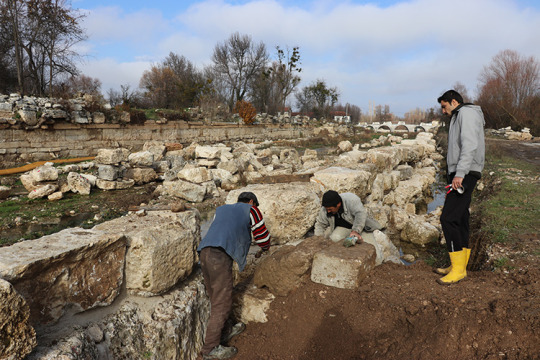
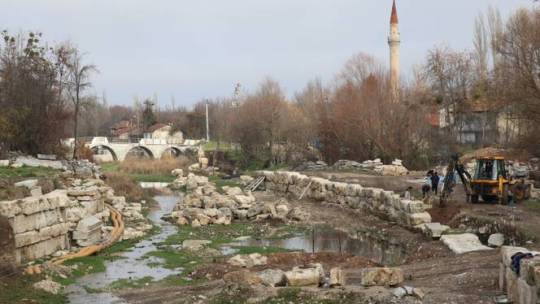
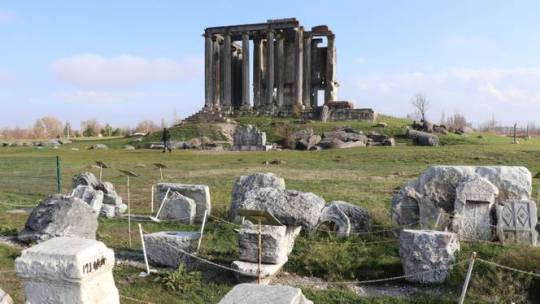
#Turkish Archaeologists Unearth Sculpted Heads of Ancient Greek Deities#ancient city of Aizanoi#Dionysus#Aphrodite#marble#marble statue#marble sculpture#marble head#ancient artifacts#archeology#archeolgst#history#history news#ancient history#ancient culture#ancient civilizations#greek history#roman history#greek art#roman art
310 notes
·
View notes
Text

Head of Dionysus uncovered in an archaeological dig in the ancient city of Aizanoi, Turkey.
2K notes
·
View notes
Text

The world's most intact temple that has survived, "Temple of Zeus", located in the ancient city of Aizanoi.
🏛️Çavdarhisar, Kütahya/TURKEY 🇹🇷
337 notes
·
View notes
Photo

Phrygia
Phrygia was the name of an ancient Anatolian kingdom (12th-7th century BCE) and, following its demise, the term was then applied to the general geographical area it once covered in the western plateau of Asia Minor. With its capital at Gordium and a culture which curiously mixed Anatolian, Greek, and Near Eastern elements, one of the kingdom's most famous figures is the legendary King Midas, he who acquired the ability to turn all that he touched to gold, even his food. Following the collapse of the kingdom after attacks by the Cimmerians in the 7th century BCE, the region came under Lydian, Persian, Seleucid, and then Roman control.
Historical Overview
The fertile plain of the western side of Anatolia attracted settlers from an early period, at least the early Bronze Age, and then saw the formation of the Hittite state (1700-1200 BCE). The first Greek reference to Phrygia appears in the 5th-century BCE Histories of Herodotus (7.73). The Greeks applied the name to the Balkan immigrants who, sometime after the 12th century BCE, relocated to western Anatolia following the fall of the Hittite Empire in that region. The kingdom's traditional founder and first king was Gordios (aka Gordias). A legendary figure, Gordios is most famous today as the creator of the 'Gordian Knot', a fiendishly difficult piece of rope-work the king had used to tether his cart. The story goes that an oracle had foretold that the person who knew how to untie the knot would rule over all of Asia, even the whole world. The cart and the knot were, incredibly, still there at Gordium when Alexander the Great (356-323 BCE) arrived a good few centuries later. Alexander was said to have heard the story and, rather unsportingly, sliced the knot open with a single blow of his sword. In other accounts, the young general slipped the pin out of the cart's yoke pole and slid the knot off that way.
The neighbouring states of Phrygia, which similarly formed out of the remnants of the Hittite Empire, were Caria (south), Lydia (west), and Mysia (north). Phrygia's territory expanded to reach Daskyleon in the north and the western edge of Cappadocia. Phrygia prospered thanks to the fertile land, its location between the Persian and Greek worlds, and the skills of the state's metalworkers and potters. Chamber tombs, especially at the capital Gordium, have distinctive doorways and their excavated contents have revealed both the use of the language of Indo-European Phrygian (from the 8th century BCE) and the wealth which gave rise to the legend of the fabulously rich King Midas (see below).
Phrygia was conquered by the Cimmerians in the 7th century BCE but the period of domination by Lydia and Persia has left an impoverished archaeological record. We know that Lydia expanded under the reign of the Mermnad dynasty (c. 700-546 BCE), and especially King Gyges (r. c. 680-645 BCE). Phrygia was absorbed c. 625 BCE with Gordium conquered around 600 BCE. Lydia then continued to prosper with such famed kings as Croesus (r. 560-547 BCE). Over the next century, the Persians took over Anatolia following the victory of Cyrus II (d. 530 BCE) over the Lydians at the Battle of Halys in 546 BCE. The region was then made a Persian satrapy. Phrygia continued to be used as a label of convenience for the general and ill-defined geographical area which had once been ruled by the now-defunct kingdom of that name.
After the campaigns of Alexander the Great, the region of Phrygia/Lydia came under the control of one of Alexander's successors, Antigonus I (382-301 BCE). Shortly after, Anatolia became a part of the Seleucid Empire c. 280 BCE. As a consequence of this takeover, many settlers came from ancient Macedon and their Hellenistic culture with them. Notable Phrygian towns in this period besides Gordium included Hierapolis, Laodikeia by the Lykos (aka Laodicea), Aizanoi, Apamea, and Synnada, although most of the region's population lived in small, agriculturally-based villages.
Phrygia became a part of the Roman province of Asia (with a part in Galatia, too) in 116 BCE, and the region now grew in scope, at least as a geographical term. To quote the Oxford Classical Dictionary:
During the Roman period the region extended north to Bithynia, west to the upper valley of the Hermus and to Lydia, south to Psidia and to Lycaonia, and east as far as the Salt Lake (1142).
Phrygia then became embroiled in the Mithridatic Wars of the 1st century BCE between Rome and the kings of Pontus. With the reign of Augustus (27 BCE - 14 CE), there followed a period of peace and stability in the region. Prosperity was ensured by the continued fertility of the land and the important marble quarries near Dokimeion - stone from there would be used in such buildings as Trajan's Forum in Rome and the Library of Celsus at Ephesus. Into the 3rd century CE, the culture of the region had become a mix of indigenous Anatolian, Greek, Roman, Jewish, and Christian practices and customs. The Phrygian language, as attested by inscriptions, was still in use in the 3rd century CE, although it is called New Phrygian by historians to distinguish it from the Old Phrygian used when the kingdom itself was in existence (the link between the two was likely created by the language being spoken only as a vernacular in the interim).
Continue reading...
123 notes
·
View notes
Text
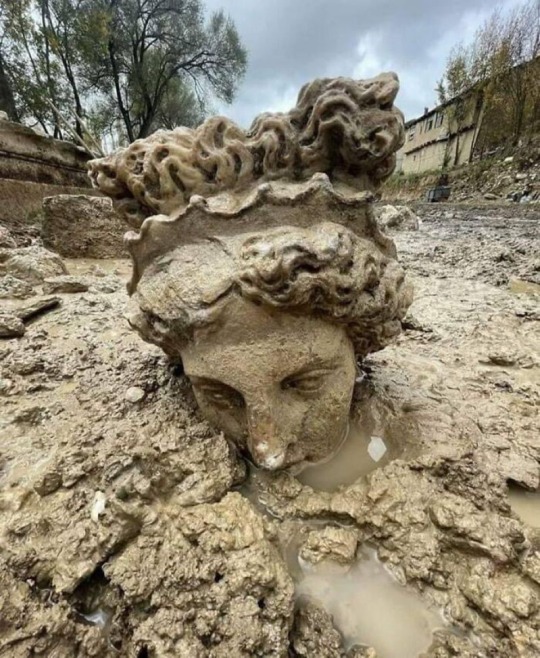
Part of the Aphrodite Statue re-emerges after more than two millennia in the ancient city of Aizanoi, Greece.🇬🇷
16 notes
·
View notes
Text
Part of the Aphrodite Statue re-emerges after more than two millennia in the ancient city of Aizanoi, Greece
The goddesses are back
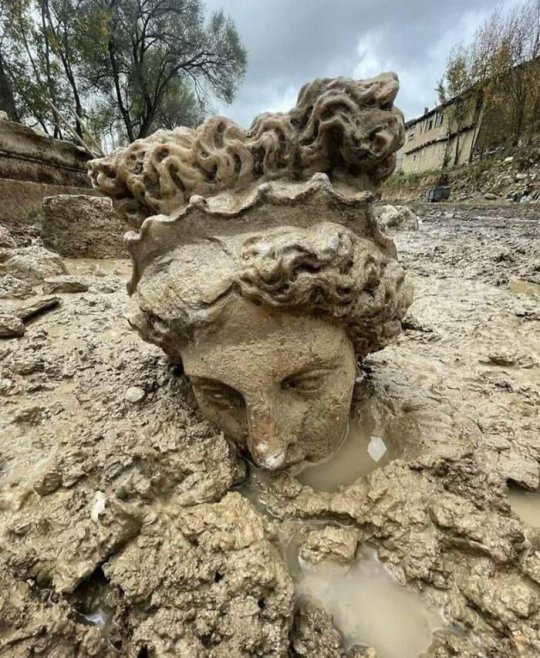
12 notes
·
View notes
Text

Part Of The Aphrodite Statue Re-Emerges After More Than Two Millennia In The Ancient City Of Aizanoi, Greece
17 notes
·
View notes
Text
Heritage News of the Week
Another busy week!
A whopping 1,294 pre-Columbian artifacts have been returned to Mexican authorities by American officials during a ceremony at the San Bernadino County Museum (SBCM) in Redlands, California on September 15.
The Grand Canyon. The Great Pyramids. Versailles. If you’re an avid traveler, you’ve certainly marveled at a World Heritage Site, one of more than a thousand places on Earth designated for recognition and protection by UNESCO, a special agency of the United Nations focusing on education, science, and culture. They represent the pinnacles of natural beauty and human achievement on Earth, the modern-day Wonders of the World. This month, in Riyadh, Saudi Arabia, UNESCO’s World Heritage Committee considered 53 new sites for the list. Among the most curious submissions was the United States’ proposal: a group of eight sites in southern Ohio featuring earthen mounds and walls, collectively called the Hopewell Ceremonial Earthworks.
Recent floods in Libya have uncovered long-buried archaeological structures in an ancient Greek settlement outside the devastated city of Derna. The magnitude of the catastrophe, however, is impeding preservation efforts.
The British Museum is finally going public on its strategy to recover the 2,000 antiquities that have been stolen from its collection in the past few years, with a webpage dedicated to the recovery operation launching today (available from 1pm). This comes as the museum reveals in a statement that 60 items have now been retrieved and a further 300 have been identified and are “due to be returned imminently”.
Related: Questions raised about role of British Museum trustees as thefts crisis progresses
The exploration has unearthed a number of storage rooms that had not been documented before. This discovery sheds new light on the architecture of the pyramid of Sahura, the second king of the Fifth Dynasty (2400 BC) and the first king to be buried at Abusir.
Archaeologists from the Dyfed Archaeological Trust may have discovered the possible birthplace of King Henry VII at Pembroke Castle in Pembrokeshire, Wales.
Two "richly decorated" gold necklaces that were likely buried in a hoard about 2,500 years ago recently saw the light of day after a landslide exposed them in northern Spain.
Gokhan Coskun of Dumlupinar University and his colleagues have uncovered a cosmetics shop in the marketplace in western Anatolia’s ancient Roman city of Aizanoi.
Burials! Burials! Burials!
Archaeologists in Kazakhstan have discovered a 3,800-year-old hexagon-shaped structure that they describe as a "pyramid." The maze-like structure is not as tall as Egypt's monuments, but currently stands about 10 feet (3 meters) high and likely served as an elite burial site.
Maya tomb with funerary offerings found during hotel construction
Excavations uncovered a stone lined funerary space sealed with limestone slabs, in which the researchers found the remains of a high-status individual who likely lived in the periphery of Palenque in a small settlement.
‘Armed to the teeth’ Frankish warrior's untouched grave found
In a discovery that has left historians and archaeologists astonished, a completely untouched grave from the Merovingian period was uncovered in Germany. Hidden among other graves that were plundered over a millennium ago, this singular grave had rested undisturbed for over 1,300 years.
Excavation of Roman cemetery reveals coffins carved with images of grapes and dolphins
Four Roman-era tombs have been unearthed in Gaza City, including two lead coffins, one delicately carved with harvest motifs and the other with dolphins gliding through water. Archaeologists have hailed the find as offering invaluable insight into the ancient history of agriculture and trade in Palestine.
Courtesan tomb discovered in burial cave
In a press announcement by the Israel Antiquities Authority (IAA), recent excavations have revealed the cremated remains of a young woman buried with a well-preserved folding box mirror from the late 4th century to early 3rd century BC.
1,400-year-old tomb of emperor in China reveals evidence of royal power struggle among brothers and a warlord
The 1,400-year-old tomb of a Chinese emperor confirms a political power struggle between royal brothers and a warlord that, until now, was known only from historical records.
Drama!
Since 2017, when the Manhattan district attorney’s office announced the formation of its first antiquities trafficking unit, it has recovered nearly 4,500 artefacts stolen from 29 countries, with a combined value of more than $375m (£307m). It is an impressive track record, made possible by specialists such as the Cambridge-based Greek archaeologist Christos Tsirogiannis, a leading expert in looted antiquities and trafficking networks. In the past five years, Tsirogiannis has helped the unit recover and repatriate ancient treasures to their respective countries of origin, providing crucial evidence obtained through his own extensive research. But in an extraordinary breach, Tsirogiannis has accused the unit of abusing his intellectual property by ignoring or downplaying his requests to be credited in official announcements.
(He is totally justified in being angry)
For the true crime girlies:
Medieval murder maps of three English cities offer window into past
The website, Medieval Murder Maps, expands on the team’s work exploring violent deaths in medieval London and also encompass homicides in Oxford and York, largely from the 14th century. As well as the written account of the inquest, each entry on the maps is accompanied by links to extra information, and some feature voiceovers.
And finally, the absolute asshaberdashery that happened in Northumberland
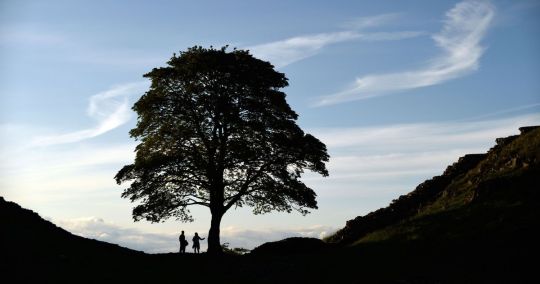
14 notes
·
View notes
Text
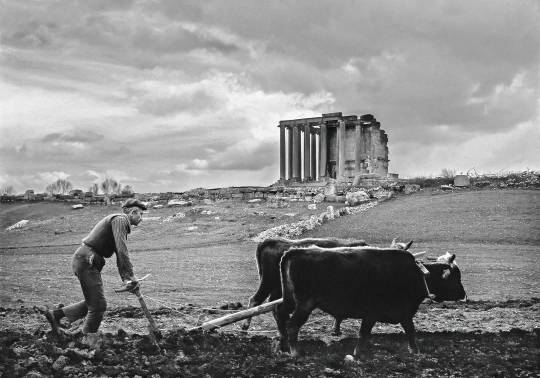
Ozan Sağdıç
A farmer ploughing his field next to the first-century Temple of Zeus in Aizanoi, Turkey. (Ozan Sağdıç, 1970)
1 note
·
View note
Text
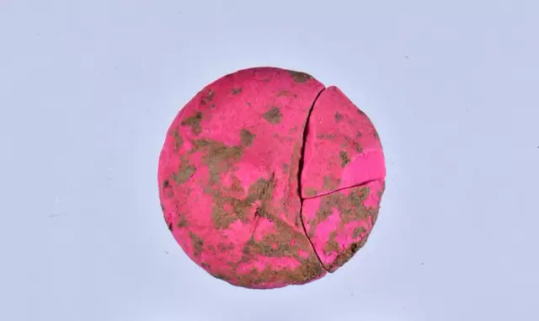
Archaeologists Find 2,000-year-old Makeup in Ancient Roman City of Aizanoi
Archaeologists discovered rare 2,000-year-old makeup and jewelry products during excavations at the ancient Roman city of Aizanoi in Türkiye’s Kütahya province, reports said Saturday.
The excavations, which have been carried out in collaboration with the Kütahya Governorate and Dumlupınar University, were conducted east of the Temple of Zeus, Professor Gökhan Coşkun, the head of the Archaeology Department at DU, told Anadolu Agency (AA).
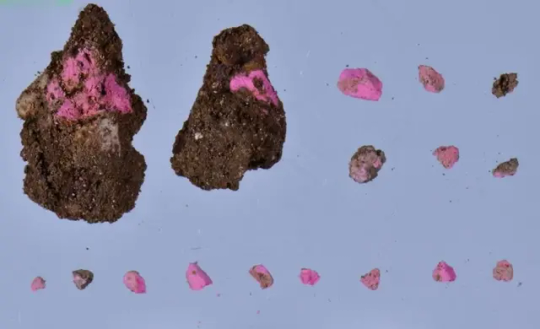
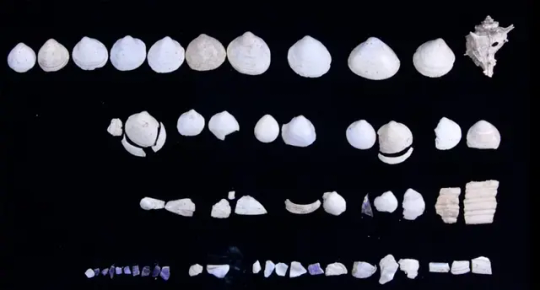
Noting that they reached 2,000-year-old shops at the marketplace in the ancient city during excavations, Coşkun said they found the remnants of a cosmetics and jewelry shop.
“We found out that the shop sold perfume, jewelry and makeup products,” he said, adding that they found many perfume bottles, pieces of jewelry and makeup.
“Women were always women,” the professor said, noting that they discovered blushes and eye shadows in the excavations.
“We know that ancient Romans stored their eyeshadows and blushes in oyster shells and we found numerous oyster shells in the shops we were carrying out excavations in,” Coşkun said.
The professor said that archaeologists discovered makeup products of 10 different colors and different sorts of hair accessories and jewelry.
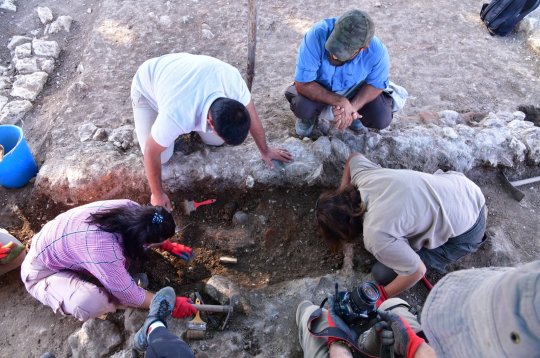
Aizanoi, whose history dates back to 3,000 B.C., was the main settlement of the Aizanitis people living in ancient Phrygia. In the Hellenistic period, the region alternated between being subordinate to Pergamum and Bithynia but came under Roman rule in 133 B.C.
It has been said that Aizanoi’s magnificent buildings, starting with the construction of the Temple of Zeus, made the city famous.
Among the ruins stands the Temple of Zeus, which remains the best-preserved temple dedicated to Zeus in Anatolia, a theater with a capacity of 15,000 people and adjacent to it a stadium with a capacity of 13,500, two baths, the world’s first commercial stock market building, a columnaded street and five bridges, two of which still stand over Kocaçay creek.
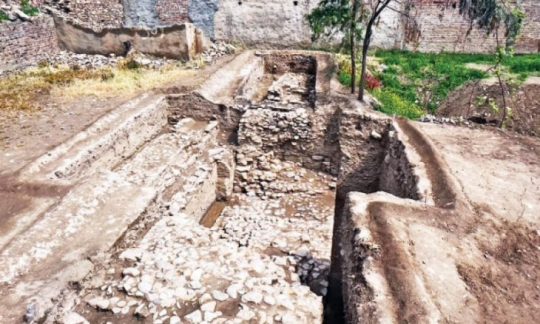

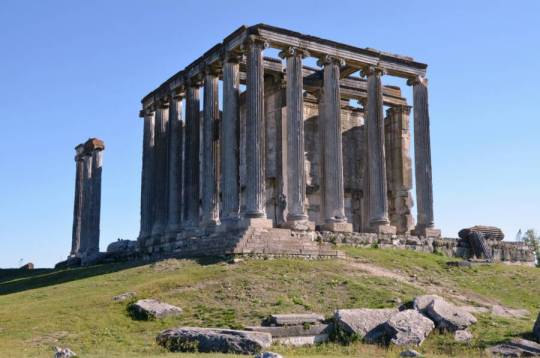
#Archaeologists Find 2000-year-old Makeup in Ancient Roman City of Aizanoi#Turkey#Temple of Zeus#ancient makeup#ancient artifacts#archeology#archeolgst#history#history news#ancient history#ancient culture#ancient civilizations#roman history#roman empire
59 notes
·
View notes
Link
Kütahya’nın Roma Dönemi: Tarihi ve Kültürel Mirasın İzleri
Kütahya’nın Roma dönemi! Aizanoi Antik Kenti, Zeus Tapınağı, Roma hamamları ve daha fazlası hakkında bilgilerle dolu bu rehberi inceleyin
Kütahya’da Roma İzleri: Antik Çağın Gizemli Yapıları ve Tarihi Mirası
0 notes
Text
Arqueólogos descubren vestigios de una tienda romana de cosméticos y joyería en Aizanoi, Turquía. Las excavaciones, dirigidas por Gokhan Coskun de la Universidad de Dumlupinar, revelan frascos de perfume y artículos de joyería cerca del Templo de Zeus, un sitio tentativo del Patrimonio Mundial de la UNESCO.
0 notes


